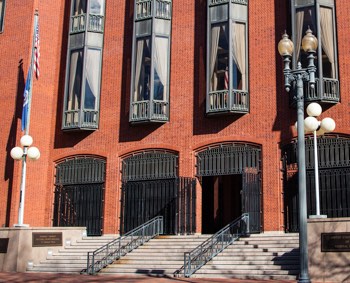 The Supreme Court is currently considering whether to review Amgen Inc. v. Sandoz Inc., the Federal Circuit’s first decision regarding the Biologics Price Competition and Innovation Act (BPCIA). Although the Federal Circuit does not technically have any input into the Supreme Court’s grant or denial of certiorari, it nonetheless took the opportunity last week to bolster one of the challenged holdings: that a biosimilar applicant cannot provide its biologic competitor with 180 days’ notice of intent to commercially market a biosimilar product until that product is licensed. Specifically, in the course of ruling in Amgen Inc. v. Apotex Inc. that a biosimilar applicant must provide such notice even if it participated in the BPCIA’s so-called “patent dance,” the Federal Circuit addressed a primary criticism of its earlier decision, namely, that permitting only post-licensure notice effectively extends by 180 days the twelve-year exclusivity term of the biologic product. The solution suggested by the panel, however, is far from a legal certainty.
The Supreme Court is currently considering whether to review Amgen Inc. v. Sandoz Inc., the Federal Circuit’s first decision regarding the Biologics Price Competition and Innovation Act (BPCIA). Although the Federal Circuit does not technically have any input into the Supreme Court’s grant or denial of certiorari, it nonetheless took the opportunity last week to bolster one of the challenged holdings: that a biosimilar applicant cannot provide its biologic competitor with 180 days’ notice of intent to commercially market a biosimilar product until that product is licensed. Specifically, in the course of ruling in Amgen Inc. v. Apotex Inc. that a biosimilar applicant must provide such notice even if it participated in the BPCIA’s so-called “patent dance,” the Federal Circuit addressed a primary criticism of its earlier decision, namely, that permitting only post-licensure notice effectively extends by 180 days the twelve-year exclusivity term of the biologic product. The solution suggested by the panel, however, is far from a legal certainty.
The Statute
Attempting to balance the interests of those engaged in original biologics discovery with the public’s desire for lower cost medical treatment, the BPCIA establishes an abbreviated pathway for regulatory approval of follow-on biologic drugs, or “biosimilars,” much as the Hatch-Waxman Act does for generic drugs. Under the BPCIA, an abbreviated biologics license application (aBLA) requires only data showing that the proposed follow-on product is either “biosimilar” to or “interchangeable” with the previously licensed biologic “reference product,” as contrasted with the extensive clinical data required to obtain FDA approval of the original biologic. In exchange, the BPCIA establishes a twelve-year period of exclusivity for an original biologic drug, regardless of patent protection, and bars the submission of a biosimilar application for the first four years of that exclusivity period.
The BPCIA also sets forth a way to channel the inevitable patent disputes between biologic and biosimilar competitors, such that alleged infringement of the most relevant patents is litigated early in the biosimilar application process, with a subsequent opportunity for the biologic owner to enjoin the biosimilar’s first commercial marketing based on additional patents not litigated in the first phase. The initial step of this so-called “patent dance” is set forth in 42 U.S.C. § 262(l)(2)(A)—within 20 days after a biosimilar application is accepted by the FDA for review, the biosimilar applicant is to provide the reference product sponsor with a copy of the application as well as information describing its manufacturing process. The biosimilar applicant and reference product sponsor then engage in a multi-step process to determine which patents will be asserted in the initial infringement lawsuit. Section 262(l)(8)(A) further provides that the biosimilar applicant “shall provide notice to the reference product sponsor not later than 180 days before the date of first commercial marketing of the biological product licensed under subsection (k),” thus triggering the second phase of litigation.
[Supreme-Court]
The Dispute
Apotex submitted a biosimilar application listing Amgen’s Neulasta® as the reference product. The parties fully engaged in the BPCIA’s “patent dance,” and in particular Apotex provided Amgen with a copy of its application and manufacturing information in compliance with § 262(l)(2)(A). During the subsequent exchange, Apotex sent a letter to Amgen providing “notice” of future commercial marketing pursuant to § 262(l)(8)(A), even though it lacked FDA approval.
Amgen sued Apotex for infringement of two patents. In light of the Federal Circuit’s decision in Amgen v. Sandoz, Amgen challenged the effectiveness of Apotex’s pre-licensure notice. Specifically, Amgen sought a preliminary injunction requiring Apotex to provide § 262(l)(8)(A) notice only upon receiving an FDA license and barring any commercial marketing for 180 days thereafter. As the parties stipulated that all but one of the preliminary injunction factors favored Amgen, the merits of the injunction turned exclusively on Amgen’s likelihood of success on the legal question presented: whether a biosimilar applicant who engages in the “patent dance” is subject to the § 262(l)(8)(A) notice requirement. That question was technically left open in Amgen v. Sandoz, as Sandoz refused to provide Amgen with its biosimilar application and manufacturing information under § 262(l)(2)(A). The district court found that the BPCIA notice requirement is mandatory and without exception, and granted Amgen’s requested injunction.
The Decision
The Federal Circuit affirmed, asserting that the statutory provision’s use of “shall” supports a categorical notice requirement and reiterating its prior holding in Amgen v. Sandoz. The Federal Circuit rejected Apotex’s argument that the notice requirement does not apply to biosimilar applicants who, unlike Sandoz, engage in the “patent dance.” In the Court’s view, the language of § 262(l)(8)(A) contains no indication that its applicability turns on whether the applicant complied with § 262(l)(2)(A). The Court also held that a preliminary injunction requiring the biosimilar applicant to provide notice is an appropriate remedy when the applicant fails to do so otherwise, and rejected Apotex’s argument that such relief is not statutorily available.
More notably, the Federal Circuit also defended its previous holding in Amgen v. Sandoz that notice cannot be provided until FDA approval of the biosimilar product is granted. In particular, the Court addressed the criticism that this ruling effectively extends the twelve-year biologic exclusivity period by 180 days, observing that it “ha[s] been pointed to no reason that the FDA may not issue a license before the 11.5-year mark and deem the license to take effect on the 12-year date.” In other words, the Court suggested that the FDA can tentatively license a biosimilar product any time after the application is submitted, and remain in compliance with § 262(k)(7)(A), which provides that biosimilar approval “may not be made effective . . . until the date that is 12 years after the date on which the reference product was first licensed.” But whether the FDA has the statutory authority to issue such tentative licenses or, even if it does, whether the FDA must do so, has yet to be litigated. Nor is it clear whether a biosimilar applicant can provide proper § 262(l)(8)(A) notice of commercial marketing upon such tentative approval.
Conclusion and Future Implications
Ultimately, while the decision favors biologic manufacturers, its long-term import depends not only on whether Apotex challenges the ruling, but also on the outcome of Sandoz’s pending petition for certiorari. A decision on whether to grant review of Amgen v. Sandoz will not occur before the October Term, as the Supreme Court recently called for the views of the Solicitor General. Sandoz has specifically challenged the Federal Circuit’s finding that a biosimilar applicant cannot provide the required 180-day notice of commercial marketing prior to FDA approval of the biosimilar product, contending that this holding effectively extends the statutory exclusivity period of the reference product beyond what Congress intended. The Federal Circuit’s speculation regarding tentative licenses appears calculated to tip the scales in the Supreme Court’s upcoming certiorari decision.

![[IPWatchdog Logo]](https://ipwatchdog.com/wp-content/themes/IPWatchdog%20-%202023/assets/images/temp/logo-small@2x.png)



![[Advertisement]](https://ipwatchdog.com/wp-content/uploads/2024/04/UnitedLex-May-2-2024-sidebar-700x500-1.jpg)
![[Advertisement]](https://ipwatchdog.com/wp-content/uploads/2024/04/Artificial-Intelligence-2024-REPLAY-sidebar-700x500-corrected.jpg)
![[Advertisement]](https://ipwatchdog.com/wp-content/uploads/2024/04/Patent-Litigation-Masters-2024-sidebar-700x500-1.jpg)

![[Advertisement]](https://ipwatchdog.com/wp-content/uploads/2021/12/WEBINAR-336-x-280-px.png)
![[Advertisement]](https://ipwatchdog.com/wp-content/uploads/2021/12/2021-Patent-Practice-on-Demand-recorded-Feb-2021-336-x-280.jpg)
![[Advertisement]](https://ipwatchdog.com/wp-content/uploads/2021/12/Ad-4-The-Invent-Patent-System™.png)






Join the Discussion
No comments yet.